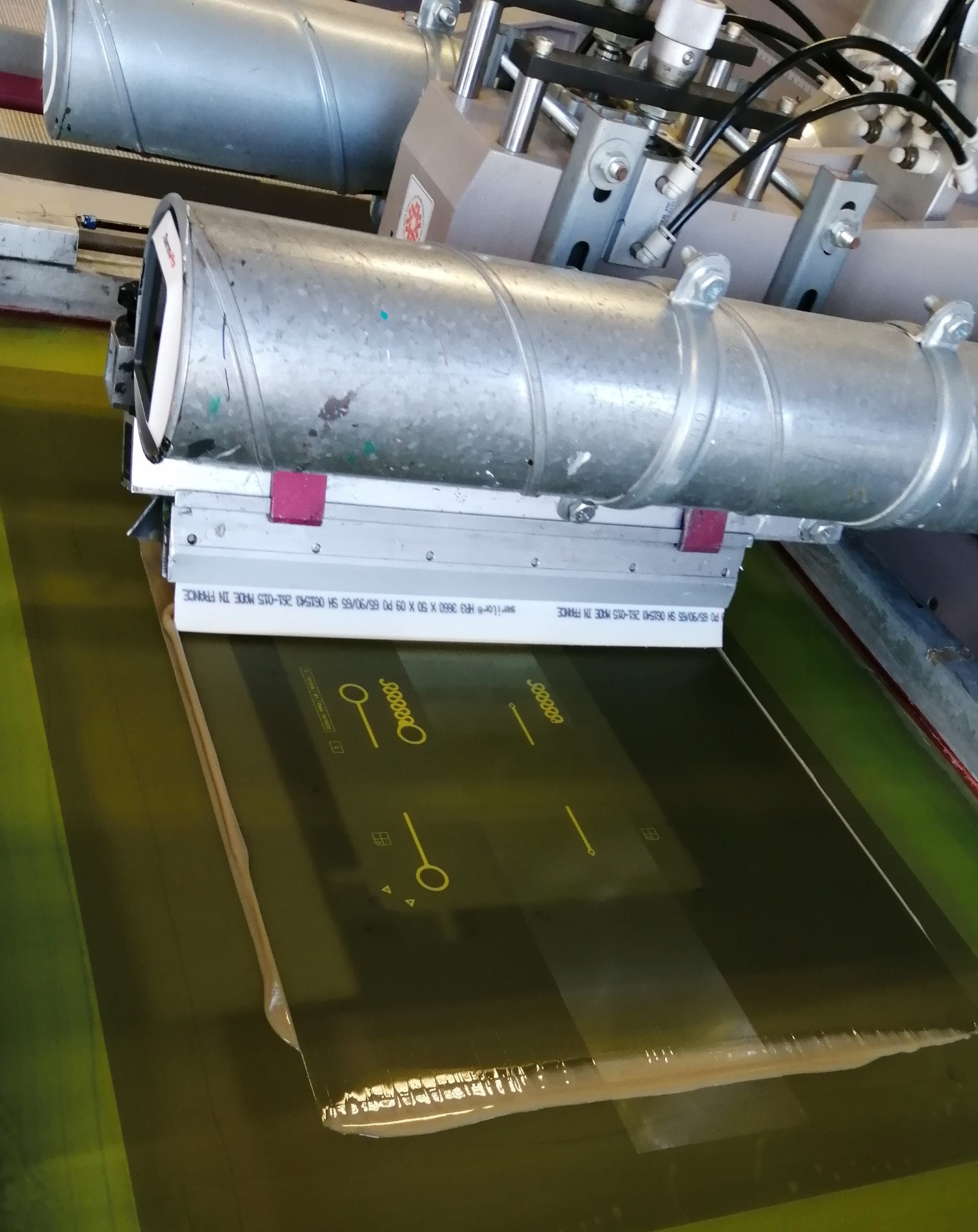Printed Electronics is a set of printing methods used to create electrical circuits on various substrates.
For Quad Industries, the typical printing method for printed electronics is screen printing. For this process, mesh-based screens are used to selectively deposit inks onto substrates, only on areas where the screen is not made impermeable by a stencil. Circuits or sensors are created by depositing multiple layers of conductive inks (eg. Ag, carbon, PEDOT) in combination with non-conductive inks (eg. isolator, coatings,..).
This printing method is a very cost-effective way to directly integrate electronics functionality on a wide range of substrates. Plastic films (PET, PC), glass, silicon and TPU are just a small grasp of the substrates that are suitable for screen printing.

Membrane switches were one of the first printed electronics on the market, out there already for over 30 years. Simply said, they are produced by laminating adhesives and a graphic overlay on a flexible printed circuit layer.
Nowadays high-precision, screen printing techniques are used to integrate many other functionalities, including sensors, antennas, touch controls and heaters; that find their way in sports & healthcare wearables, automotive interiors, smart objects and many more.
Conclusion:
Printed electronics are clearly a key enabler to making daily objects smart. Allowing for the direct integration of electronics into transparent, lightweight, flexible and stretchable materials, they find their way in a wide range of industries including Automotive, Medical, Industrial and Home Appliance industry.
